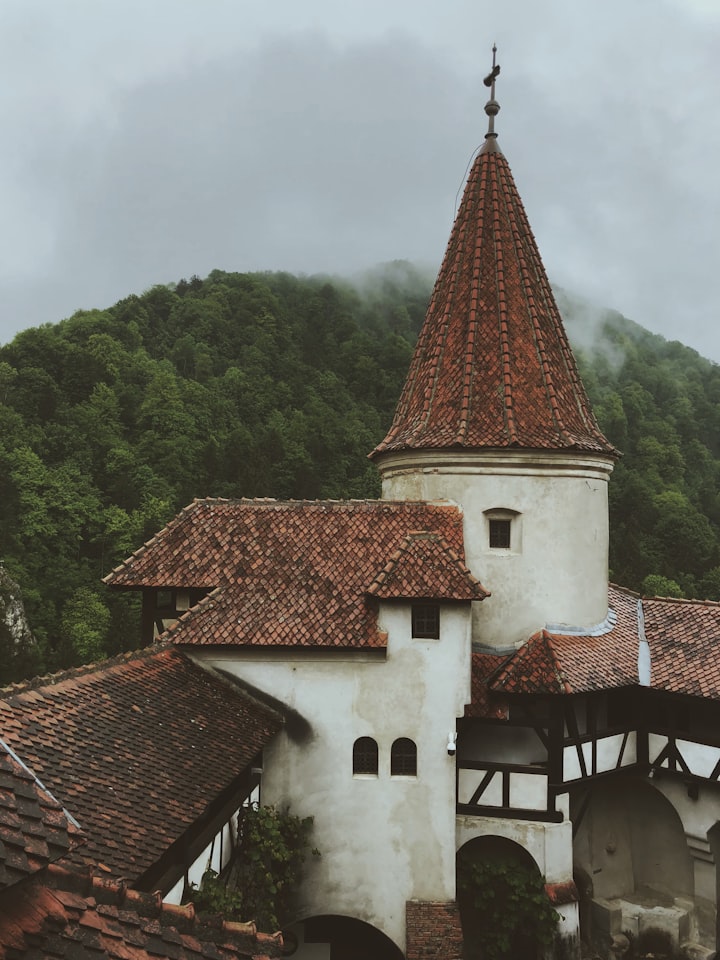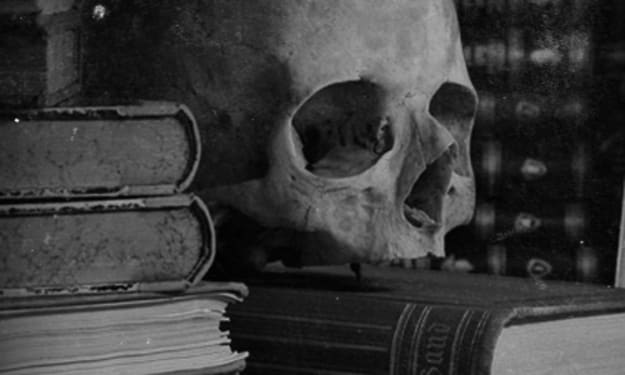Symbolic Monsters of Legend - Vampires
A discussion on the symbolism of vampires.

Horror enthusiasts will always respect vampires and their everlasting presence throughout history. They've spread terror since the origins of Mesopotamian and Jewish folklore and were depicted in so many different ways, their beliefs about them overlapped and spread throughout the world. We commonly know vampire tales to be most prominent in many parts of Europe, but their legend is global and their archetype is littered throughout literature to this day. Let's look into a brief history of the vampire and explore their symbolism. Then, I'll propose another interpretation of vampires.
A Brief History

It can be argued that the birthplace of the vampire was Mesopotamia when these "demonic-phantoms" would drain the lifeforce of their prey. They have a close association with the Incubi and Succubi, seductive demons who drain the life of men specifically. The Mesopotamian folklore overlaps with the Biblical figure, Lilith, a demoness, a goddess, and a vampire who has been called a succubus. She is paralleled with Mesopotamia's Lamashtu who fed off of infants. In Asia, specifically the Philippines, the Aswang was a blood-sucker who appears as a young girl during the day and becomes monstrous at night. China has the Jiang Shi, the hopping vampire whose abilities sound more necromantic considering it possesses corpses rather than becoming "undead", but it will hide away during the day then steal a person's "qi", or lifeforce, at night. Malaysia and Indonesia have a vampiric curse that specifically targets women who wish to be beautiful through magical means. They are called Penanggal or Manananggal who have a gruesome appearance and their victim of choice is pregnant women.

Now the post-Christian vampire lore is what we're more familiar with. In Slavic Europe, rumors about the living dead already plagued the area and the battles between the Roman Catholic Church and other denominations of Christianity didn't help. While the Abrahamic religions were on the rise, the cultures considered more demonic or pagan were countered with authoritative force because any tales about living dead was bound to be unholy. In Christianity whatever died stayed dead unless they were chosen to have a holy resurrection and, of course, Jesus already did that. However, Slavic Europe has a long history of the undead, from vampires to lycanthropy (werewolves), due to their understanding of the dead (and sleep paralysis). Their legends spread throughout Europe, becoming most prominent in Romania. Now we're really in familiar territory.

The common term for the living dead was "strigoi". It's also a term for witches, but they were considered alive and capable of supernatural powers. The undead "strigoi" was a stealer of lifeforce and/or a drinker of blood. They were an ongoing terror in Romania and word of their torment spread throughout Europe. As you may expect, the rumors fell on the ears of Bram Stoker, author of Dracula. He was inspired not just by the strigoi, but also Vlad III Dracula, more commonly known as Vlad the Impaler, Voivode of Wallachia. Bloodshed is closely tied to the vampire legend, obviously, and Stoker made sure Dracula was portrayed as such while also concealed in mystery and fear. In Stoker's novel, the counter to Dracula's power was piety, religious artifacts, and other items so that whoever was dead would stay dead and not be victim to vampirism. However, years before Stoker took a crack at the vampire legend, Lord Byron's personal doctor, John William Polidori, wrote the novella The Vampyre in 1819 after a campout with Byron and The Shelleys (which is also when Mary started Frankenstein in 1816, if you were curious). Somehow Lord Byron got the credit for "The Vampyre", which sparked inspiration for Le Fanu's Carmilla and Stoker's Dracula. This seemed to make the terribleness of the vampire legend easier to cope with and more intriguing, but certainly didn't decrease the intense existentialism a vampire brings to history and fiction. Immortality for a monster, no matter how classy they look in Victorian fashion, still makes many of us wonder if living forever in hunger would be worth it or if we should respect death when it comes.
A Modern Look

Today, we see vampires and expect blood, sex, mystery, and existential dread, but they ended up fitting in two main categories: Creatures of pure violence acting as a bane to human society or glamorized and showing a semblance of humanity while brooding over the supernatural drama in their lives that they most likely started themselves (and pulled some humans into that drama from time to time). In either category, the vampire will always be a mysterious outsider, that element of the unknown that you either want to kill or get it on with. I think what keeps our intrigue when it comes to the vampire is how they organize in different eras of time. Writers usually have their vampire characters starting an invasion, ruling over an area of the world, or doing something that conflicts with humanity's normalcy. Audiences like to watch vampires forge their own afterlife, to die and be given a kind of clean slate that comes with a curse. Perhaps audiences are interested in this because they aspire to have that as well or at least have a taste of the mysteries of death then live again. Although they're restrained by the ravenous hunger for blood, a lot of vampires don't lose their humanity if they're designed that way.
It's rare for the vampire to simply be killing machines in modern tales because it doesn't have much intrigue. Most shows will make vampires like these the villain, an infection that must be destroyed. There are other shows that discuss the tug-of-war between beast and human with the vampire at the center of attention, but I noticed not many audiences are interested in that philosophical topic as much as they were in the past. The vampire today should either be a sex symbol, a center piece for angsty drama, or a target.
I would give a list of vampire shows and movies, but you and I both know there are so many. Still, I think you'll notice the common themes pointed out earlier no matter what your vampire watch history is.
Vampire Symbolism

The symbolism of the vampire is more philosophical than anything else even though some modern audiences don't want to see it. The vampire is a seemingly immortal being that collects knowledge and power depending on their lifespan. As the undead, they are given the opportunity to build their own afterlife which include conquering the dynasties of humanity by playing the political games. There has always been a focus on their hunger, but it's not just for blood. Vampires in their folkloric and literary past were simply beasts, but very few then and more today want to satisfy the hunger of actually living. Because the vampires were associated with instinctual desire for so long, they became icons of our shadow or subconscious selves wanting to be free to chase their hungers for as long as they want, but then vampires became glamorized, dramatic, and just as complex as humans, which I think represents how people would prefer to have that balance of harnessing the power of their shadow and the civility that comes with human norms.
So, the vampire lives, but eventually dies for something.
Sources:
https://vampiresaroundtheworld.weebly.com
https://www.mprnews.org/story/2016/01/12/books-first-vampire-in-literature






Comments
There are no comments for this story
Be the first to respond and start the conversation.